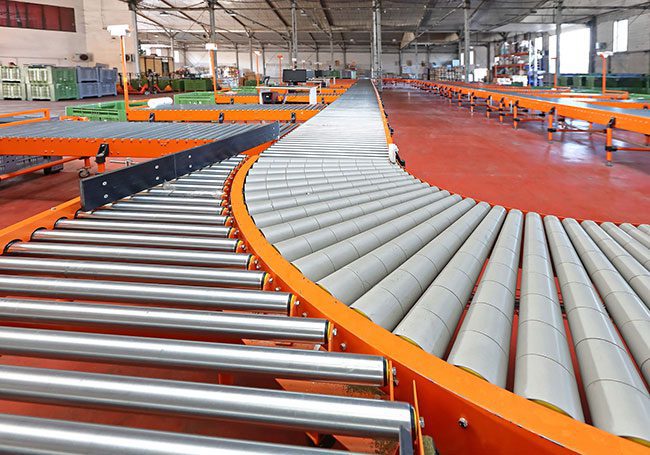Conveyor Support Systems

In many ways, the primary factor determining the quality of a given conveyor system isn’t the conveyor itself, but the conveyor supports controlling the elevation and alignment of the conveyor. While some projects may only require a simple arrangement of floor supports, other applications may require combinations of floor supports, hangers, and wall brackets.
Customizing For Your Task
To get the best possible efficiency from your conveyor system, you’ll need it matched to conveyor supports, both customized to optimally suit the task at hand. The best conveyor support setup for a grain elevator and a stone quarry aren’t likely to be the same -the optimal setup for two grain elevators isn’t even likely to be the same.
You’ll need to take several different factors into account when working on a system. It’s probably best to work with a team that keeps an engineer handy. If the system is not built right for the task, it isn’t going to last.
Materials and Design
As conveyor systems are frequently used in harsh environments indoors and outdoors, their support systems must be built to withstand the same conditions for a prolonged period of time. The standards may not need to be as rigorous as they are for something with moving parts like the conveyor itself. Ideally, you’ll be conducting less maintenance on the supports than the rest of the system, so you’ll want the structures built sturdily.
You’ll want to make sure each aspect of your design is selected with these factors in mind:
- Temperature: Not just raw resistance to heat and cold, but the fluctuation between the two. A foundry will always be quite hot, but an outdoor conveyor for a grain system may experience more wear from temperature simply due to rapid shifts.
- Humidity: For certain materials and applications, humidity is important to consider. It’s much easier to control in an indoor environment.
- Exposure: Simply put, what will have physical access to your conveyor system? If it’s outdoors, it’s a question of the local environment. If it’s indoors, you may need to account for corrosive substances in the air.
- Weights: What sort of weight does your system need to be able to support?
- Usage: Will your conveyor system and its support be under constant load or be used sporadically? Will usage be focused on narrow bands of time or be distributed evenly over the year?
- Space: What are the physical realities around the conveyor? This will largely determine whether floor supports, hangers, brackets or other solutions are most appropriate for your conveyor.
- Mobility: How much does the system need to be able to move? Will it need small adjustments, no adjustments or complete relocations to other destinations?
- Cleaning: Will you be able to keep the supports clean and clear of debris? How much time do you want to commit to keeping your conveyor supports clean (if any)?
These aren’t necessarily the only factors that matter, they’re just a jumping off point, to make sure you’re considering your project from every angle. The more directions you consider, the fewer problems you’ll face when you have the completed system in front of you.
Finding the Right Partner
Finding a welding partner equipped to produce the necessary support structures for your project can be difficult. Smaller facilities can be limited in volume, size or workable materials in a way that larger facilities, like Swanton, are not. This means that in most cases you’ll be best served working with a larger team that is more familiar with conveyor systems and their supports, if you want the most efficient and effective design possible.
Make sure you take the time to discuss your situation and see what specific solutions a particular welding team might offer. If it seems like you’re going to get a one-size-fits-all solution that doesn’t particularly suit your needs, then you need a different partner. Of course, you also want to pay attention to the normal flags for contract work like professionalism, guarantees, warranties, references, etc.
If you’d like to learn more about your options when configuring a conveyor system and its conveyor support system, feel free to contact Swanton Welding today. We’ll gladly discuss your options, help you figure out what you’ll need to manage your conveyor successfully, and work with you to maximize efficiency within your budgetary constraints.

